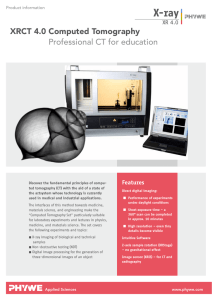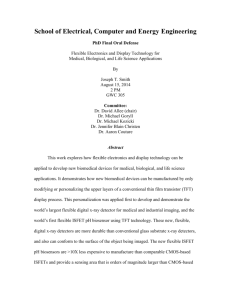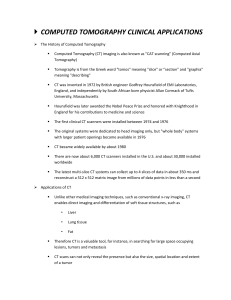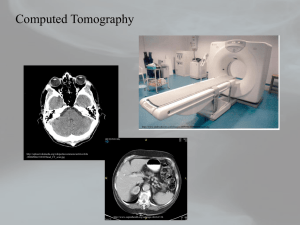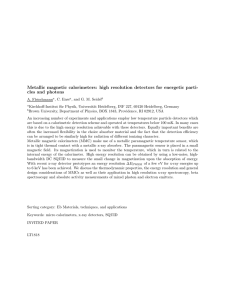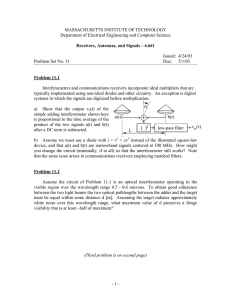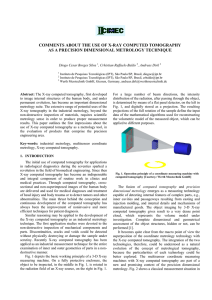AbstractID: 11929 Title: Energy-sensitive, photon-counting computed tomography: opportunities and technological challenges.
advertisement
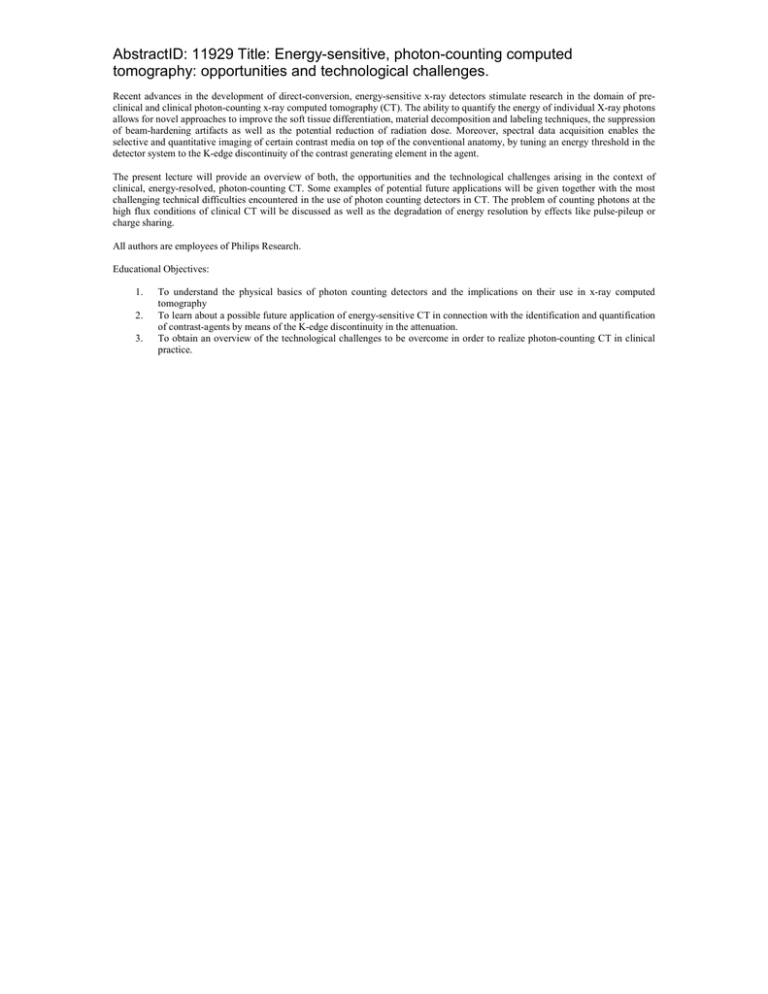
AbstractID: 11929 Title: Energy-sensitive, photon-counting computed tomography: opportunities and technological challenges. Recent advances in the development of direct-conversion, energy-sensitive x-ray detectors stimulate research in the domain of preclinical and clinical photon-counting x-ray computed tomography (CT). The ability to quantify the energy of individual X-ray photons allows for novel approaches to improve the soft tissue differentiation, material decomposition and labeling techniques, the suppression of beam-hardening artifacts as well as the potential reduction of radiation dose. Moreover, spectral data acquisition enables the selective and quantitative imaging of certain contrast media on top of the conventional anatomy, by tuning an energy threshold in the detector system to the K-edge discontinuity of the contrast generating element in the agent. The present lecture will provide an overview of both, the opportunities and the technological challenges arising in the context of clinical, energy-resolved, photon-counting CT. Some examples of potential future applications will be given together with the most challenging technical difficulties encountered in the use of photon counting detectors in CT. The problem of counting photons at the high flux conditions of clinical CT will be discussed as well as the degradation of energy resolution by effects like pulse-pileup or charge sharing. All authors are employees of Philips Research. Educational Objectives: 1. 2. 3. To understand the physical basics of photon counting detectors and the implications on their use in x-ray computed tomography To learn about a possible future application of energy-sensitive CT in connection with the identification and quantification of contrast-agents by means of the K-edge discontinuity in the attenuation. To obtain an overview of the technological challenges to be overcome in order to realize photon-counting CT in clinical practice.
